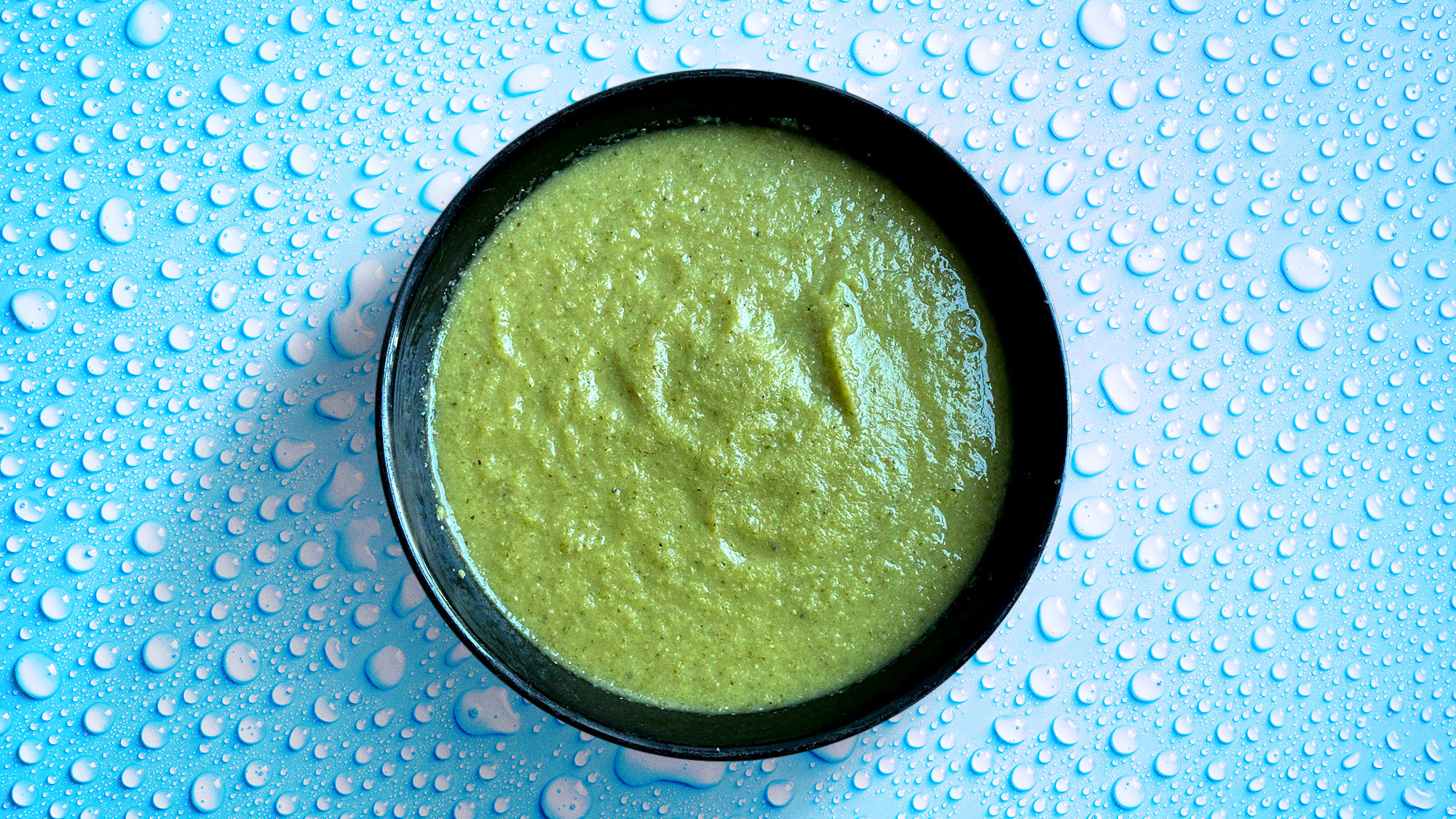Make Cucumber Ketchup, The Most Fun Way To Eat Your Vegetables
This uncelebrated condiment tastes great on top of grilled fish and feta.
First off, I want to emphasize that cucumber ketchup is not tomato ketchup mixed with cucumbers. I figure that's worth mentioning, since tomato ketchup is the only kind of ketchup most of us have ever heard of. But in fact, the general concept of ketchup existed for hundreds of years before tomatoes even entered the equation, and even thereafter, it would still be several decades before Heinz developed the iconic tomato-based recipe that muscled all the other vegetables out of the ketchup kingdom.
The word "ketchup" is most likely derived from the Hokkien Chinese word kê-tsiap, a fermented fish sauce that documents show has existed since at least 300 B.C.E. Because of its seemingly infinite shelf life, it became a popular condiment for sailors who spent months at sea. As these sailors traveled from port to port, kê-tsiap went with them, finding new fans wherever it went, evolving into countless variations on a theme as cooks used whichever ingredients were available in their countries.
About 2,000 years after the first recorded mention of kê-tsiap, it was introduced to British traders, who brought it back to England. There it evolved yet again, but not with tomatoes. The British turned many foods that needed preserving into ketchups, like mushrooms, walnuts, celery, oysters, and, yes, cucumbers. The usual method of ketchup-ing was to heavily salt these foods to extract their liquids, blend them with spices and vinegars, and boil them down until they became a concentrated paste of intense flavor that could be preserved for years.
The British brought their precious ketchup-making skills to America, where the condiment evolved once again. In 1812, Philadelphia scientist James Mease published a recipe for tomato-based "catsup." In 1876, a small Pittsburgh-based canned goods company called Heinz decided to add a tomato ketchup to its existing line of vinegars, pickles, and bottled horseradish. As the company grew and the production of food became more industrialized, people came to believe that tomato was the only kind of ketchup, and that it was something you bought by the bottle instead of making yourself.
Once tomato ketchup took over America, the ketchups of yore were mostly forgotten, and that's a shame. The first time I made cucumber ketchup from a recipe in a 200-year-old cookbook, I was furious that I'd gone my entire life without tasting it. Try eating this on a simple piece of grilled fish and tell me you don't feel the same.
Cucumber Ketchup
- 2 English cucumbers, cut into large pieces
- 1 small onion, peeled
- 1 piece fresh ginger (1"), peeled
- 2 large cloves garlic
- 1 1/2 tsp. fresh horseradish
- 1 tsp. Dijon or horseradish mustard
- 1 1/2 tsp. kosher salt
- 1/2 tsp. freshly ground black pepper
- 1/4 tsp. grated nutmeg
- 1 large sprig fresh dill, or 1/2 tsp. dried dill
- 1/3 cup sherry vinegar
Put all the ingredients in a blender and puree until smooth, then pour into a large saucepan and set over high heat. When the thick ketchup starts to bubble and pop like hot lava, reduce the heat to medium-low and cook for 20 minutes, stirring occasionally.
Set a fine mesh sieve over a large bowl and pour in half of the hot cucumber ketchup. Use the back of a spoon to press the ketchup through the sieve, then repeat with the remaining ketchup. (Alternatively, you can do this with a food mill.) Pour the ketchup into a glass jar or bottle and keep refrigerated for up to one month. Serve with fish, lamb, salty cheeses, or whatever else strikes your fancy.
